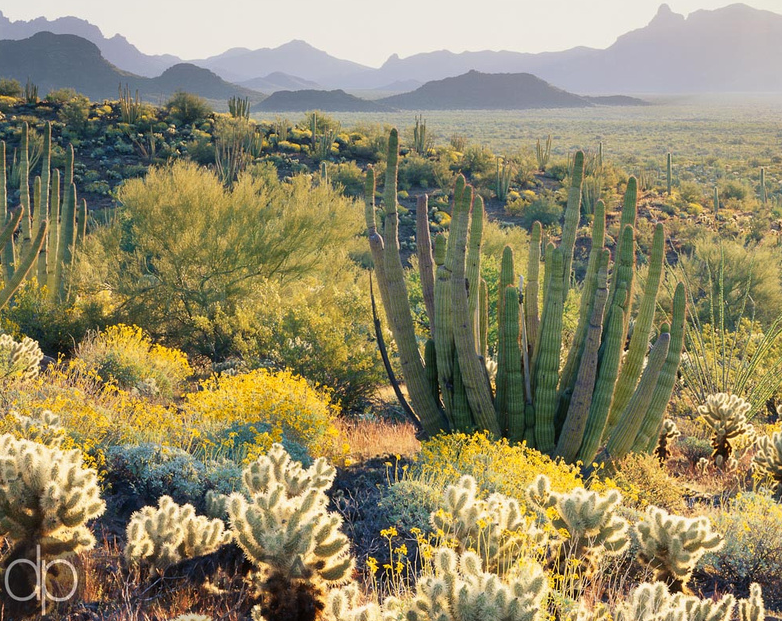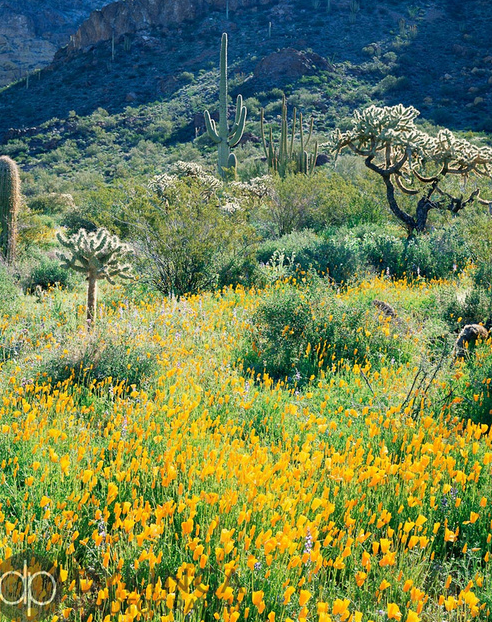The works of Jack Dykinga have longed appealed to because this photographer is always able to emphasize the beauty of nature by paying attention to color patterns and space. His pictures show that the choice of lighting, angle, and equipment is extremely important for every photographer.
Moreover, this person should be able to find the moment when one can capture colors and shapes in the best ways. In this paper, I would like to discuss two photographs by Jack Dykinga. In particular, I would like to discuss his picture of Mexican Poppies and Organ Pipe Cactus.
In my opinion, these works represent the typical characteristics of Dykinga’s style, namely saturation of colors and ability to show the illusory aspects of space. These are the main issues that I would to discuss.
There are several things that make these photographs stand out among others. It should be noted that Jack Dykinga uses a large-format camera that enables to depict almost panoramic landscapes (Fox, 2005, p. 20). First of all, the photographer attracts the viewer’s attention to the foreground of the picture and they can see it in close detail. For instance, one can see his picture of Organ Pipe Cactus.

Jack Dykinga lets the viewer see the growing brittlebush and cactuses. However, the silhouette of the Ajo Mountains is almost blurred. This approach to photography was developed by David Muench (Fox, 2005, p. 20). The same technique can be seen in the photograph of Mexican Poppies. This is one of the techniques that this photographer often applies. Nevertheless, there is another aspect that has always appealed to me.

Jack Dykinga is able to demonstrate the illusory nature of space and material objects. For instance, in the background of his photograph, the viewers can see a see a mountain chain covered with mist. At first glance, it seems that some of these mountains are not real.
Overall, I can say that very few photographers can show nature in such a way. These examples suggest that Jack Dykinga is indeed a prominent photographer who captures unique images of nature.
Additionally, the pictures of this photographer are usually color-saturated. For example, one can look at his picture of Mexican Poppies, especially the presence of deep blue color. In order to render it, a photographer should choose a particular angle and moment. In some cases, such a task can be very difficult. This is one of the reasons why Jack Dykinga’s photographs stand out among others.
Overall, I can say that the works of Jack Dykinga are very difficult to imitate. First of all, it is important to choose appropriate lighting that would enable a photographer to render the colors and details of the landscape.
When I tried to take a similar picture, I had to spend much time in order to recreate his use of space and palette. I learned that photography requires much preparation. Certainly, I may not want to imitate the works of this photographer, but his use of saturated colors greatly appeals to me.
The works of Jack Dykinga show that photographers can rediscover the beauty of nature, but in order to it they should be able to choose the most suitable moment at which one can render rich palette of the landscape and illusory aspects of its forms.
Reference List
Fox, W. (2005). Desert Water. New York: Graphic Arts Center Publishing Co.